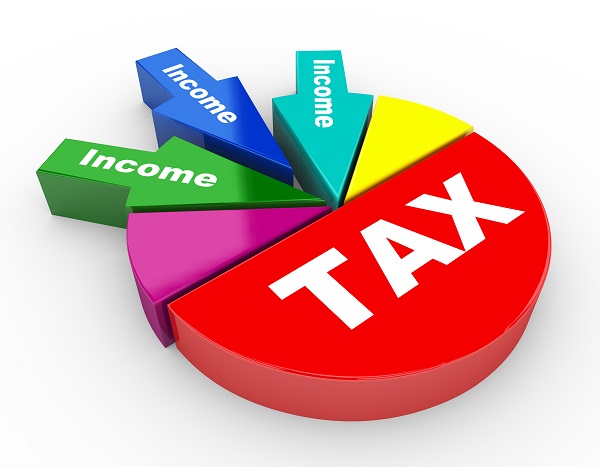Section 194IB Of The Income Tax Act: Purpose, Rules And TDS Deposition Guide

Section 194IB of the Income Tax Act focuses on TDS deducted on the payment of house rent. If you are paying monthly rent, then you are required to deduct a certain percentage of TDS as mentioned under Section 194IB and submit it to the government.
Here is a comprehensive guide on Section 194IB of the Income Tax Act.
Section 194IB: What is It?
Section 194IB states that if a Hindu Undivided Family or an individual pays rent to any resident that exceeds Rs. 50,000 for a part of a month or for a month, then they have to deduct a TDS of 5% of the amount.
However, individuals or HUFs who are not liable to tax audits under Section 44AB are eligible to make such deductions. TDS cannot be deducted under Section 194IB if the rent amount does not exceed the prescribed limit.
As a tenant, you have to deduct a TDS at 5% of the total rent in case your landlord provides the PAN. However, the absence of PAN can lead to TDS deduction at a rate of 20%. That said, the TDS amount should not exceed the rent paid in the last month of tenancy.
When Should you Deduct TDS u/s 194IB?
If you are the tenant, you have to deduct the TDS at the time when the rent amount is credited to the account of your landlord. Alternatively, it can be deducted during the actual payment, whichever would be earlier. TDS deduction will take place only once in a financial year and not every month.
You can make the payment in cash, draft, cheque or any other method.
What is Rent under Section 194IB?
As per Section 194IB, rent is any payment that you make under a lease, sub-tenancy, tenancy or any other form of arrangement that is made for different assets such as:
- A building which includes a factory
- Machinery
- Land
- Land which includes a factory
- Equipment
- Furniture
- Plants
- Fittings, etc
Also Read
Rules about TDS Deposition, Certificates u/s 194IB
Taxpayers eligible to make TDS deductions on rent under Section 194IB should be aware of the following provisions:
Due date of deposition
When a tenant deducts TDS from the rent amount, he/ she has to make the deposition using Form 26QC. If the rent payment takes place on behalf of the government, then the TDS deposition will take place on the same day.
However, when rent is paid on behalf of anyone other than the government, a TDS deposition should take place by the 7th day from the last day of the month in which the deduction happened.
If tax deduction under Section 194IB took place in March, then deposition has to be before April 30 of the same year.
TAN not necessary
You do not need to have TAN (Tax Deduction and Collection Account Number) for making deductions of TDS as per Section 194IB.
Form for TDS submission
For deposition of TDS, you have to submit a challan-cum-statement Form 26QC. You can submit this form electronically. Once you have successfully submitted the TDS, you need to provide a TDS certificate (Form 16C) to your landlord within 15 days. You can generate this TDS certificate online.
Steps to Make TDS Deposition under Section 194IB
Tenants who make TDS deductions on rent can deposit the tax amount online through a few simple steps. These are as follows:
Step 1
At first, go to the official website of NSDL.
Step 2
Now, locate and select ‘TDS on Rent of Property’. A fresh window will appear on your screen. Tap on ‘Online form for furnishing TDS on property (Form 26QC)’.
Step 3
A new ‘e-Payment of Taxes’ page will now appear. Provide all necessary information, including tax deposit details, the amount paid, tax deduction date, details of tenant and landlord, and property details.
Step 4
You can pay the tax through the website or visit any of the authorized banks.
Step 5
Make sure to note down your acknowledgement number after payment. You can download or take a printout of Form 26QC for future references. In the end, generate Form 16C and provide it to your landlord as evidence of TDS deposition.
How does Section 194IB Differ from Section 194I?
The following tabular representation chalks out the differences between Section 194I and Section 194IB:
| Parameters | Section 194I | Section 194IB |
| Applicable limit | Overall rent of Rs. 2,40,000 per year from FY2020-21 | Overall rent of Rs. 50,000 each month or part of a month for a particular financial year |
| Applicability | Applicable for all residents, including individuals and HUFs who are liable to tax audits | All individuals and HUFs who are not liable to tax audits under Section 44AB |
| TDS rate | 10% rate on land or building, 10% on fittings or furniture and 2% on machinery, plant and or equipment | 5% with PAN and 20% without PAN |
| TAN requirement | Compulsory | Not necessary |
| Return | Through Form 26Q | Through Form 26QC |
| Certificate | Form 16A | Form 16C |
Also Read
Final Word
Individuals paying rent or earning an income through rent should be aware of the provisions of Section 194IB of the income tax Act. This will help them to carry out necessary tax-related formalities correctly.
Frequently Asked Questions
In case you miss the prescribed deadline for deposition of TDS on rent, then you have to pay a penalty interest of 1% of the total TDS amount per month or part of the month. This penalty is applicable from the stated date of TDS deposition to the actual date of deposition.
You can face a late filing fee of Rs. 200 each day under Section 234E for filing a TDS return beyond the prescribed date. However, the total fee for late filing should not be more than the total TDS amount.
Yes, you will have to pay the penalty for the late payment of TDS to the government. You will be liable to pay a penalty interest of 1.5% for each month or part of a month of the total TDS deducted. This interest will be counted from the date of TDS deduction till the date of payment.
While filling out Form 26QC, you have to provide the following information:
Address of the property that has been rented out
Address of both tenant and landlord
PAN of both landlord and tenant
Period of tenancy
Total rent
Penalty interest or late fee, if applicable
Date of TDS deduction
Rent paid for the last month
Form 16C was introduced along with Section 194IB of the Income Tax Act. Form 16C is a TDS certificate that is quite similar to Form 16 and Form 16A. You will receive this certificate after you submit the TDS you deducted under Section 194IB. This form acts as evidence that TDS has been deposited to the government on the payee’s behalf.
Disclaimer
This article is solely for educational purposes. Navi doesn't take any responsibility for the information or claims made in the blog.
Read More on Income Tax Act

What is Form 26QB for TDS? How to Download and Submit it?
While purchasing a property, buyers are liable to pay various taxes. The Finance Act, 2013 made TDS... Read More »PF Withdrawal Rules 2023 – Rules, Documents Required and Types
EPF/PF Withdrawal Employees’ Provident Fund (abbreviated as EPF) is a popular retirement sav... Read More »Stamp Duty and Property Registration Charges in Delhi 2023
It is compulsory for property buyers in the Capital to pay stamp duty in Delhi during property regi... Read More »Income Tax Return – Documents, Forms and How to File ITR Online AY 2023-24
In India, it is mandatory for all taxpayers who earn more than the basic tax exemption limit to fil... Read More »What is Section 80CCD – Deductions for National Pension Scheme and Atal Pension Yojana
The Income Tax Act provides a number of deductions and tax benefits to taxpayers, so they can strat... Read More »Tax on Dividend Income: Sources, Tax Rate and TDS on dividend income
What are Dividends? Companies may raise funds for running their operations by selling equity. Th... Read More »Section 112A of Income Tax Act: Taxation on Long-Term Capital Gains
What is Section 112A? Section 112A of the Income Tax Act was announced in Budget 2018 to replace... Read More »Section 206AB of Income Tax Act: Eligibility And TDS Rate
Section 206AB was introduced in the Finance Bill 2021 as a new provision pertaining to higher deduc... Read More »What is a Credit Note in GST – Example, Format and Steps
A GST Credit Note is mandatory for any GST-registered supplier of goods or services. As a supplier,... Read More »Exemptions and Deductions Under Section 10 of Income Tax Act
What Is Section 10 of the Income Tax Act? Section 10 of the Income Tax Act, 1961 provides tax-sa... Read More »Section 57 of the Income-tax Act – Income from Other Sources
It is quite likely that many entities - individuals as well as businesses - have multiple sources o... Read More »What is Dearness Allowance? – Types, Calculation, and Current Rate
What is Dearness Allowance? Dearness Allowance Meaning - Dearness Allowance (DA) is an allowance... Read More »Top 10 Chit Fund Schemes in India in 2023
Chit funds are one of the most popular return-generating saving schemes in India. It is a financial... Read More »10 Best Gold ETFs in India to Invest in April 2023
Gold ETFs or Gold Exchange Traded Funds are passively managed funds that track the price of physica... Read More »10 Best Demat Accounts in India for Beginners in 2023
Creation of Demat accounts revolutionised the way trades were conducted at the stock exchanges. It... Read More »20 Best Index Funds to Invest in India in April 2023
What is an Index Fund? An index fund is a type of mutual fund or exchange-traded fund (ETF) that... Read More »Best Arbitrage Mutual Funds to Invest in India in April 2023
Arbitrage funds are hybrid mutual fund schemes that aim to make low-risk profits by buying and sell... Read More »10 Best SIP Plans in India to Invest in April 2023
What is SIP? SIP or Systematic Investment Plan is a method of investing a fixed amount in ... Read More »10 Best Corporate Bond Funds in India to Invest in April 2023
Corporate bond funds are debt funds that invest at least 80% of the investment corpus in companies ... Read More »10 Best Bank for Savings Account in India [Highest Interest Rate 2023]
Savings account is a type of financial instrument offered by several banks. It lets you safely depo... Read More »


































